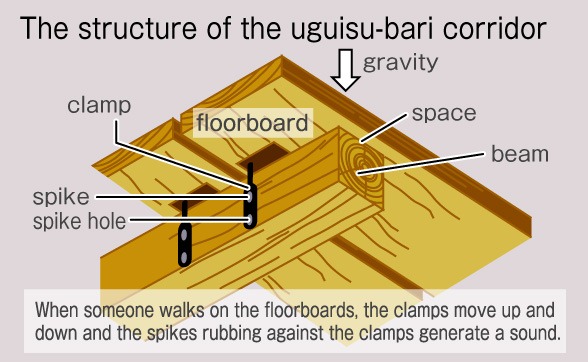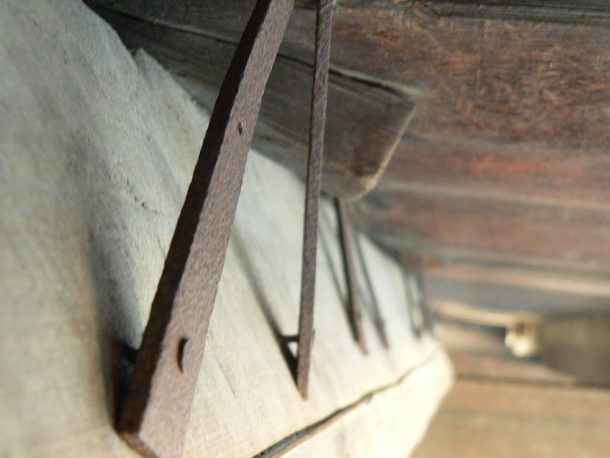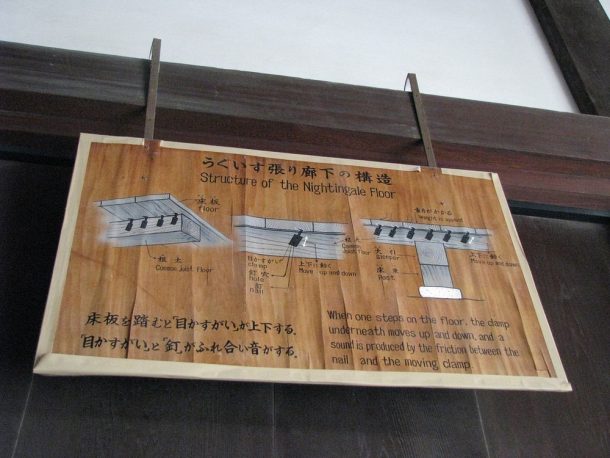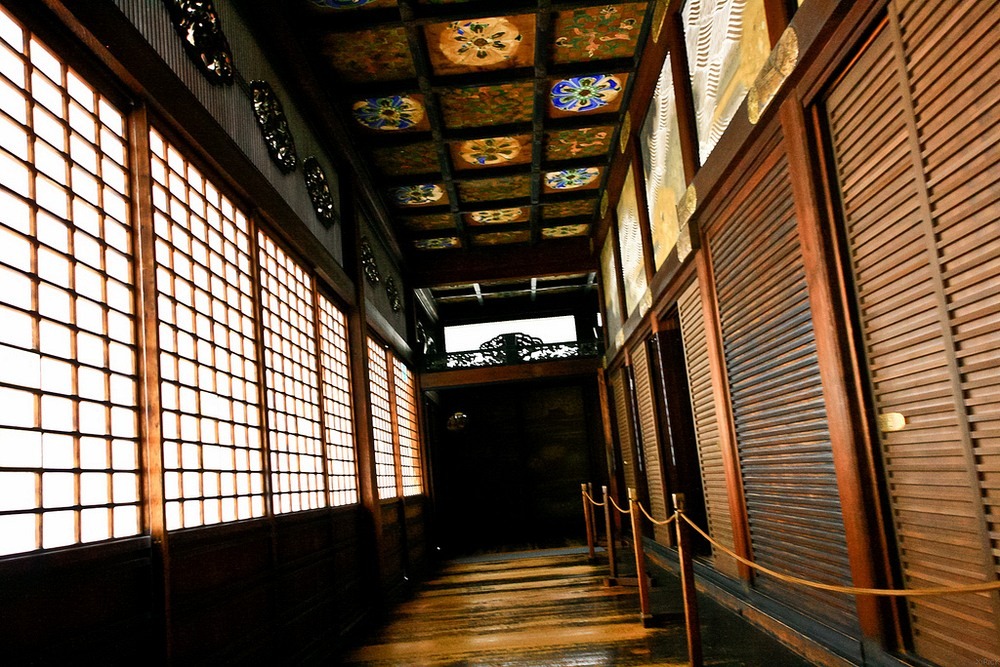We all know how annoying squeaky floors can be. We have all come across them and we have all done everything in our power to make them stop squeaking. However, in ancient Japanese societies, squeaky floors were a preference, especially among royal families as they were used as an effective anti-theft alarm system.
Some of the Japanese castles built during the Edo period had these floors. There are known as uguisu-bari or the Japanese Nightingale, a bird that prefers to stay hidden but its distinctive breeding call can be heard throughout most of Japan from the start of spring.

These nightingale floors were popular from the early 17th century to the mid 19th century. This is known as the Edo period and was relatively peaceful with fewer wars and rivalries. Tokugawa shogunate was the ruler of Japan and the threat from shogun’s subordinate feudal lords was always present.
Tokugawa Ieyasu, the founder of Tokugawa shogunate, built the Niko Castle in Kyoto and ordered nightingale floors to be built in the hallways so that anyone trying to sneak into the castle would immediately alert the guards. Dry boards creak naturally but the nightingale floors have extra metal clamps located between the beams that support the floorboards of the corridor.

There are two spike holes in each clamp through which an iron spike goes. When someone walks on the boards, it results in the up and down motion of the clamp and causes the spike to rub against the clamp which results in a shrilling noise.

Since it was impossible to walk across the hallways without alerting the guards of your presence, it served as a very efficient anti-theft alarm system. The two best places to see and experience nightingale floors are the Nijo castle in Kyoto, and Chion-in, a temple where the Tokugawa family used to stay. You can learn more in the video below:


